Topic 1: Sleep and Dreams
1/67
There's no tags or description
Looks like no tags are added yet.
Name | Mastery | Learn | Test | Matching | Spaced |
|---|
No study sessions yet.
68 Terms
Sleep apnea
A sleep disorder where you don’t breathe during your sleep because your throat is closed; you feel your chest heave up and down (paradoxical movement) and the belt can pick that up very well
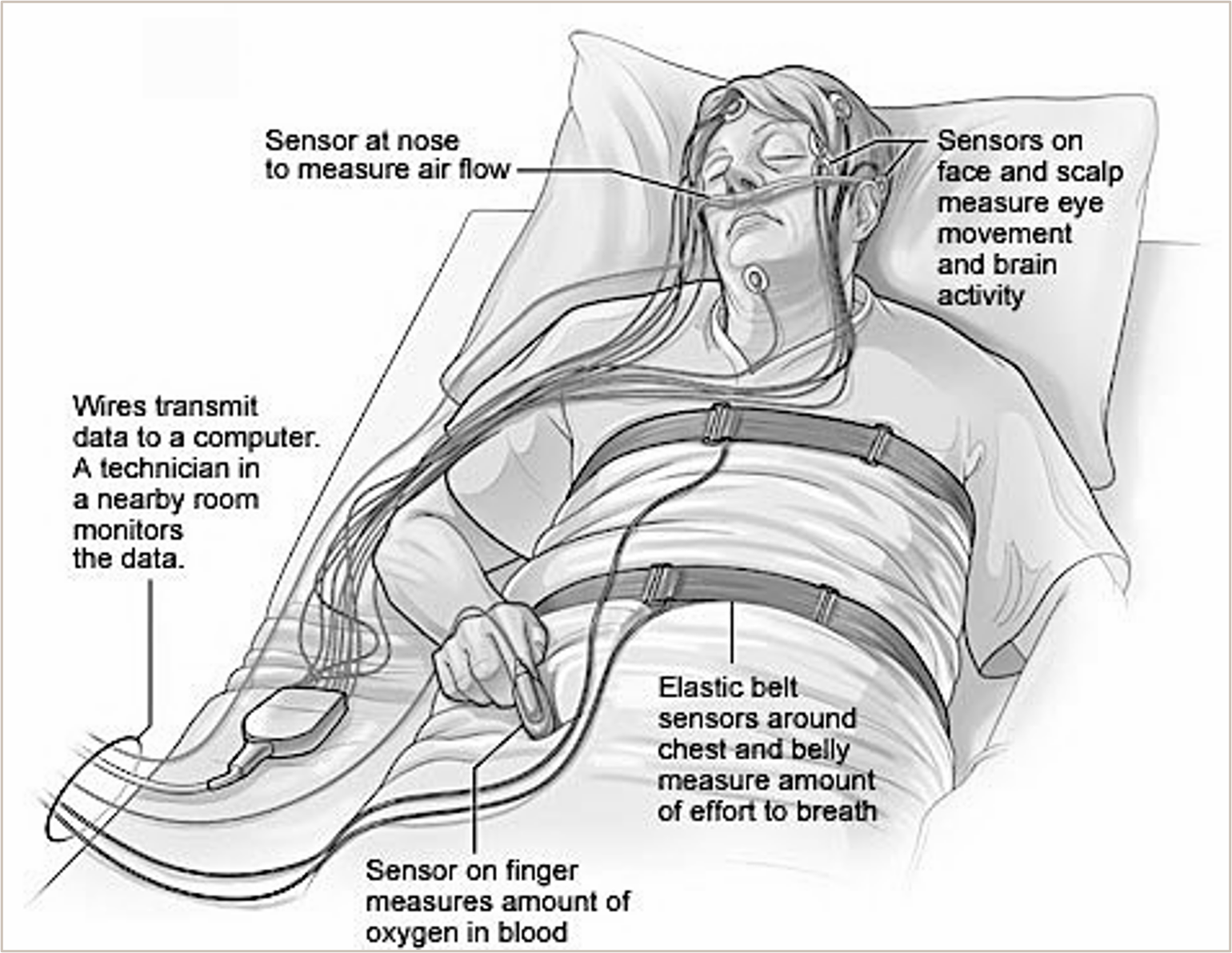
Polysomnography (PSG)
A test conducted to diagnose sleep disorders. The test records your brain waves, the oxygen levels in your blood, your heart rate and your breathing. Also monitored are your eye and leg movements.
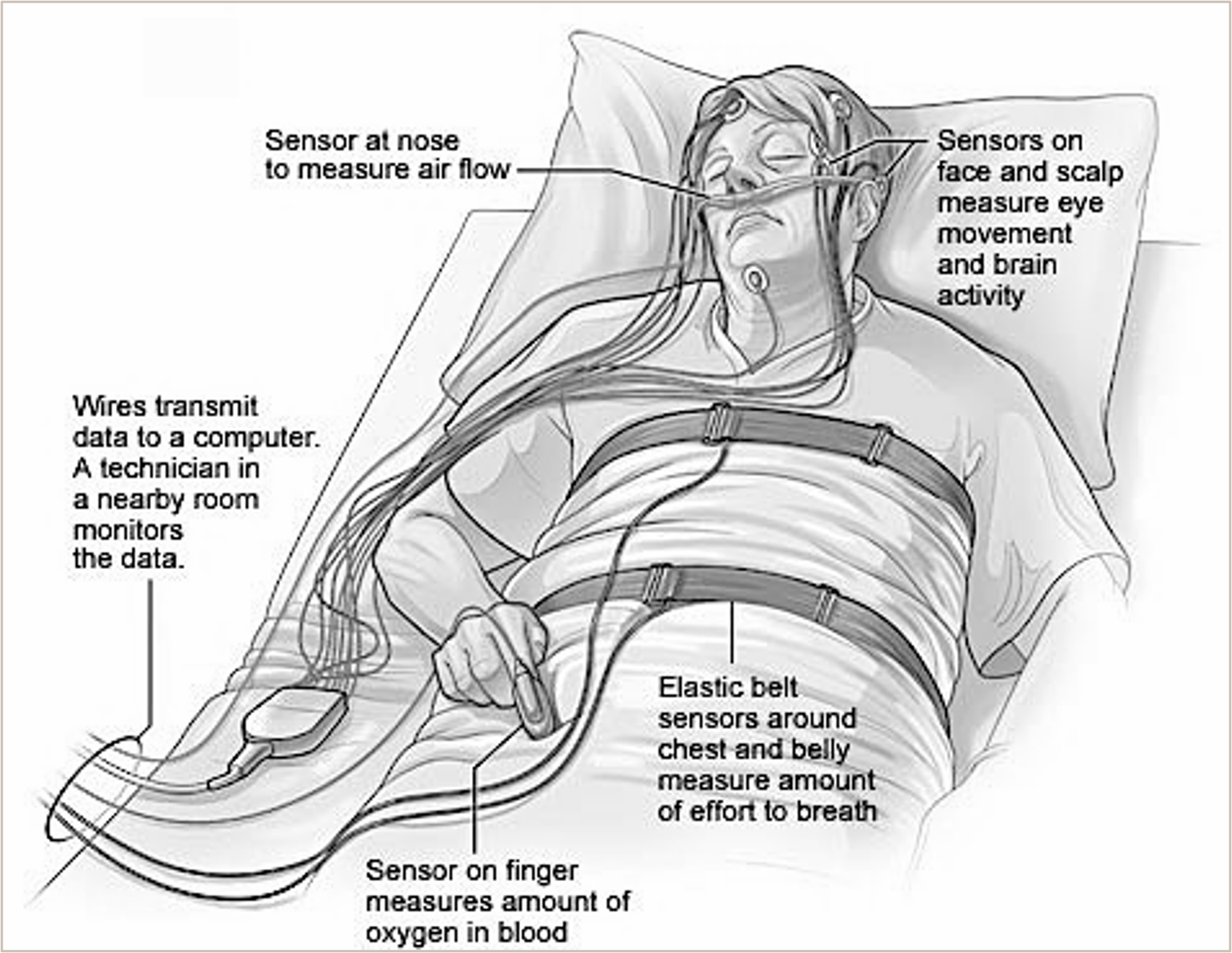
EEG
Brainwaves (Central & Occipital Leads)
EOG
Eye movements
EMG
Muscle tone, usually on the chin, picking up muscle movement
EKG/ECG
Heart rate
Airflow
Measured with a cannula (little tube) or thermistor (thermometer)
Breathing effort
Thoracic & Abdominal measurements
Digital AV recording
Taking infrared pictures of people to see what position they’re in; when people have apnea, usually they are sleeping on their back
10/20 system
Trying to standardize where electrodes should be on different sized heads; this system is based on how big their head is
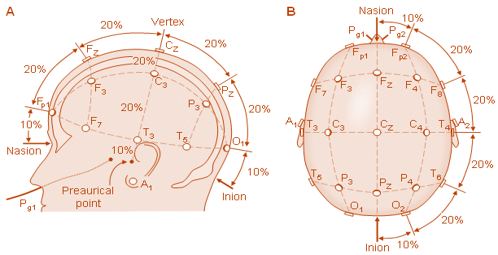
N1 sleep
Lightest stage of sleep (hypnic jerks/sleep starts), dozing, very close to consciousness (ex. Falling dream and you wake up
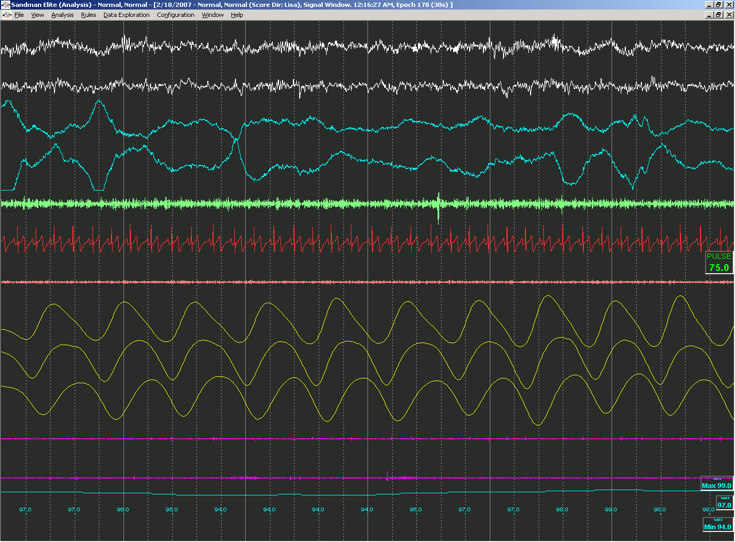
N2 sleep
Sleep spindles & K complexes, has a lot to do with learning information and has a restorative aspect to it

N3 sleep
Deepest most physically restorative stage of sleep. More difficult to awaken from this stage. Decreases with age.
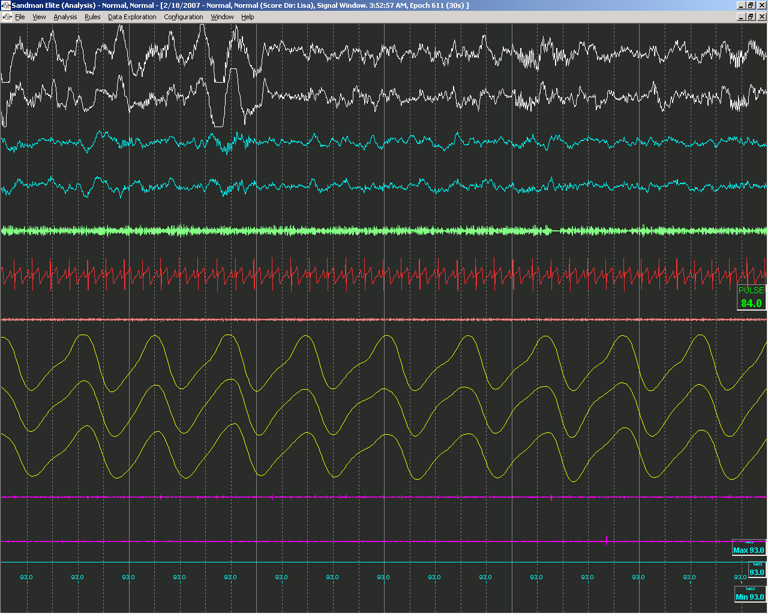
K complex
When the EEG does a huge upward spike followed by a huge downward spike and then becomes normal again; a reaction when your brain might need to wake up
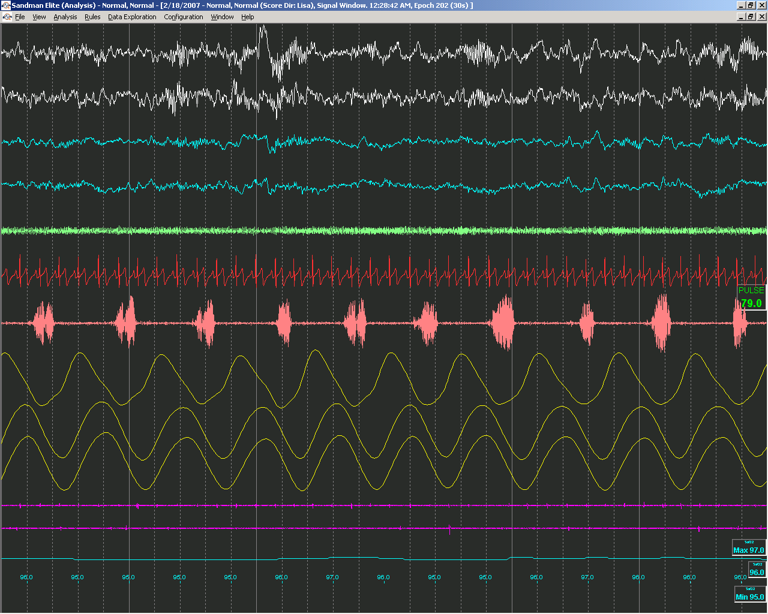
Spindles
Thalamic activity that happens when you get a burst of activity that is much higher in frequency than the waves around it; often happens after K-complex
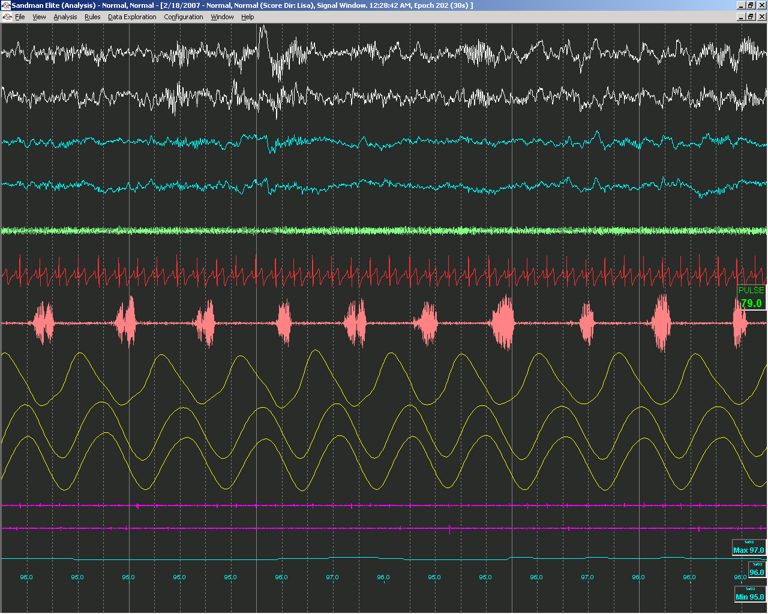
REM sleep
A sleep stage when your eyes move quickly and you dream, your brain is active, and your muscles are temporarily paralyzed.
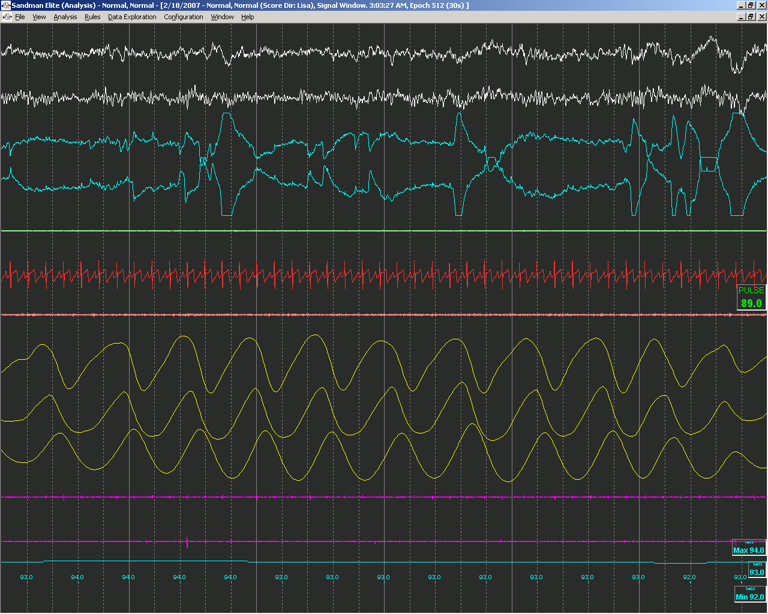
Latency
How long it takes for something to happen (Ex. REM has a 90-minute ___)
Hartman
Studied people switching from SS to LS depending on stress level present; lots of stress= LS, less stress=SS (like normals but exaggerated)
Long sleeper
Get about 10-12 hours of sleep with a latency of 34 minutes and 110 minute-long cycle
Short sleeper
Get about 4-5 hours of sleep with a latency of 17 minutes and 90 minute-long cycle
Introspective methods
These are subjective methods, measured with scales such as: The Epworth Sleepiness Scale, The Stanford Sleepiness Scale, and The Analog Scale
Physiological methods
The Multiple Sleep Latency Test (MSLT)
Manifest methods
Maintenance of Wakefulness Test (MWT), Psychomotor Vigilance Task
Epworth Sleepiness Scale
0 = no chance of dozing, 1 = slight chance of dozing, 2 = moderate chance of dozing, 3 = high chance of dozing
Stanford sleepiness scale
Choose one of the following to describe your current state: (1) Feeling active and vital, alert, wide awake to (7) Almost in reverie, sleep onset soon, lost struggle to remain awake
Analog scales
Developed on which a person indicates how they feel by placing a mark on a line of set width, usually 10 cm, between very alert at one end and very sleepy at the other
The Multiple Sleep Latency Test (MSLT)
A formal study where the patient does a night study first and then the next day, they stay at the lab all day and go down to try to nap; commonly used to diagnose narcolepsy (will show REM during naps)
Maintenance of Wakefulness test
Same process as MSLT but you try to stay awake while semi-reclined
Psychomotor vigilance task
Reaction time to unpredictable visual cue; tests sustained vigilance in the face of monotonous task
Full-fetal position
Resistance to experiences and personality growth; highly emotional, sensitive, artistic; intense one-on-one relationships
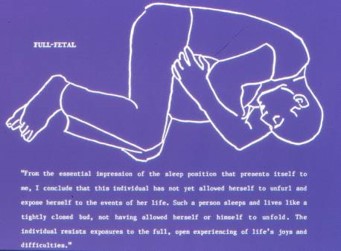
semi-foetal position
Sensible adjustment to the world; well-balanced and secure; conciliatory, compromising, non-threatening, non-shakers (the personality of a “cotton ball”)

Prone position
Desire to control, take charge; don’t like surprises; strong compulsive tendencies, stubbornness in their personalities, persistent and goal-oriented
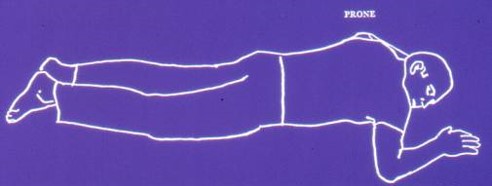
Dorsal position
Feel secure; assured; self-confident; strong personality; workaholic businessmen and entrepreneurs often prefer this position.
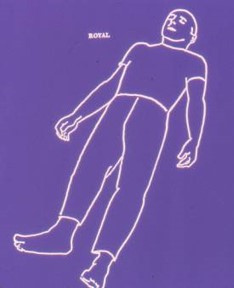
Johnson et al
First scientific study of sleep positions and found that most people prefer sleeping on their sides
De Konick
Found that as we are going into deeper sleep, we don’t tend to move, but as we come back up, we tend to move around
Chronobiology
The study of biological rhythms
Ultraradian rhythm
A biological rhythm that is more than once per day – they are ULTRA quick!)
Circadian rhythm
A biological rhythm that’s about 24hrs
Infradian rhythm
A biological rhythm that is less than once per day – multiple days IN a cycle
Period
Duration of the rhythm

Amplitude
Height of the wave
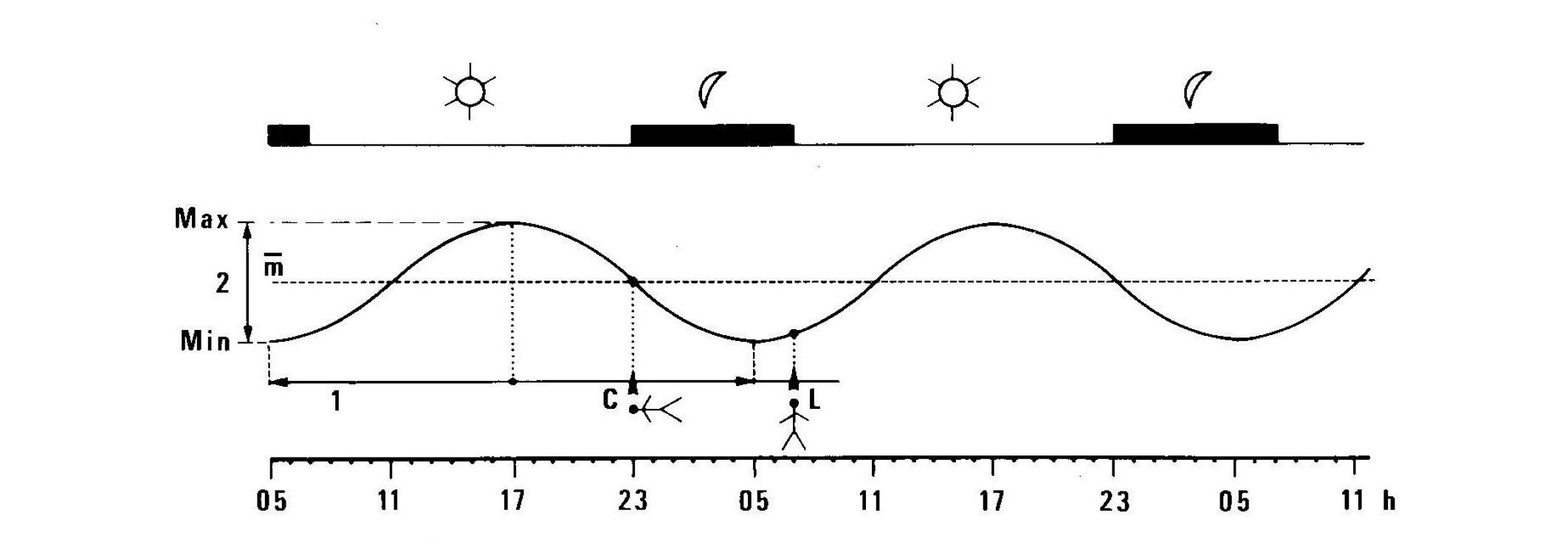
Acrophase
Time when the wave is the highest
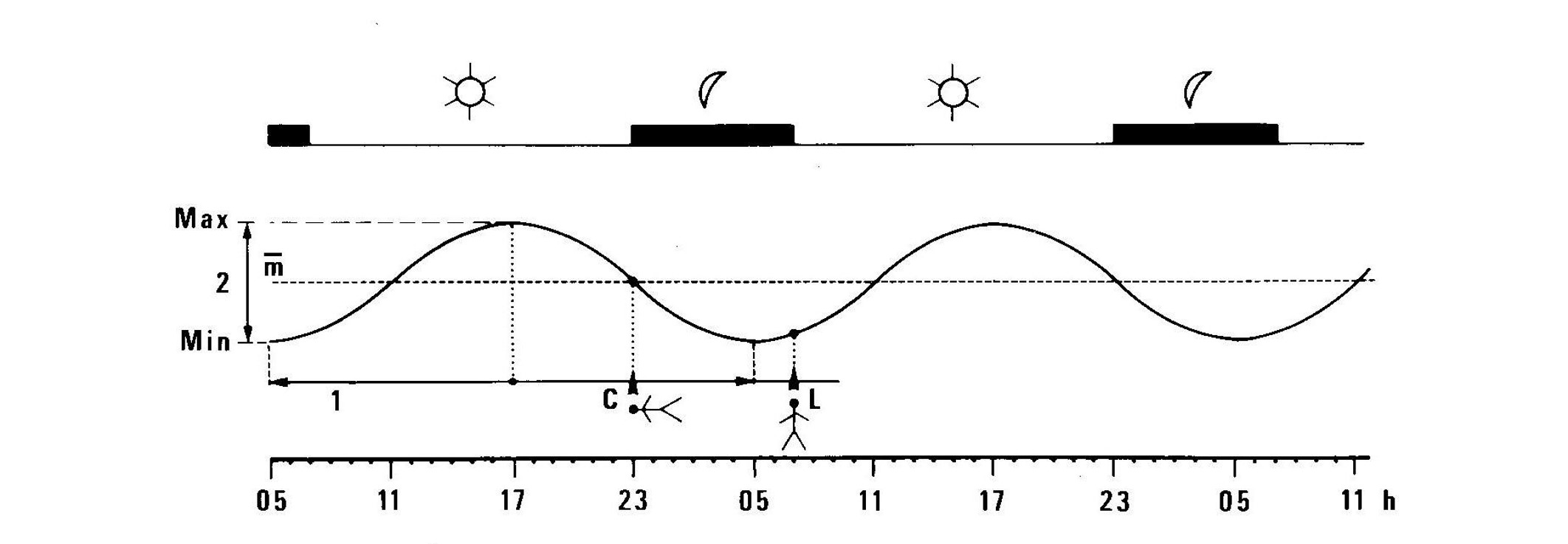
Nadir
Time when the wave is at its lowest
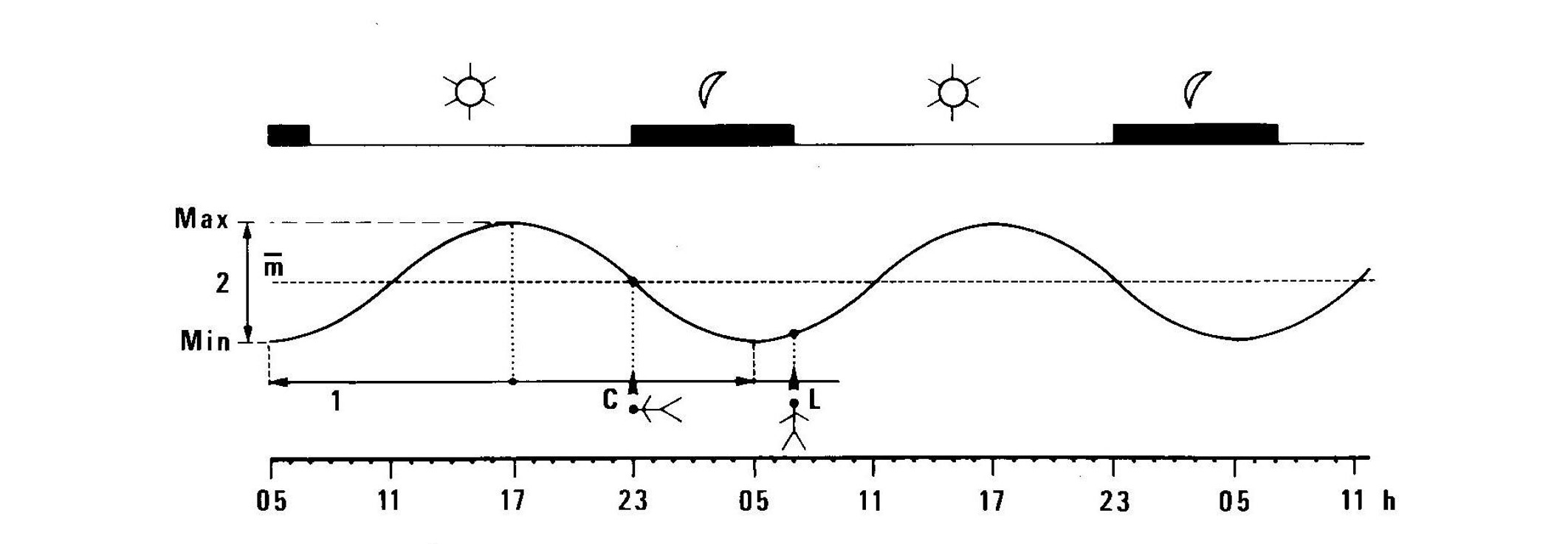
Phase
Relative position of the curve relative to some other curve or to time (two curves can be in phase, or out of phase)
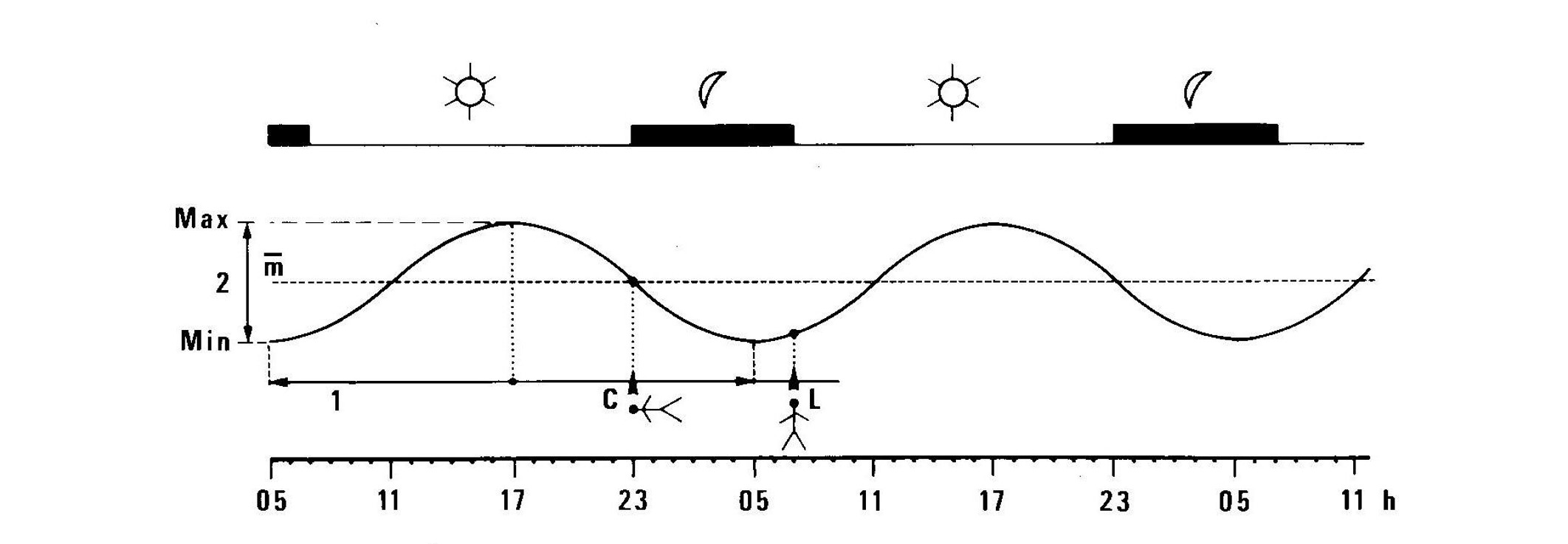
Seasonal affective disorder
Related to decrease in light exposure during the winter period. Can lower mood and alertness, and mess with phase advance/delay.
Growth hormone
Generally released at night, most prominent in children and released in SWS
Melatonin
Released on a 24 hour cycle, which triggers us to fall asleep; release is triggered by darkness
Physiological substrate
Hypothalamus: Suprachiasmatic nucleus (SCN)
Suprachiasmatic nucleus (SCN)
The conductor of our circadian rhythms; receives direct, non-visual light input from the retina
Phase delay
When a powerful light is present early during the subjective night, it delays the circadian rhythm (sleepiness happens later); more frequent in adolescents
Body temperature
Indirect measure of the circadian clock (Easier to fall asleep when ___ is going down)
Evening type (night owls)
Best functioning in evening, phase delayed, max vigilance at T acrophase
Morning type (morning larks)
Best at functioning in the morning, phase advanced, max vigilance 3 hrs before T acrophase
Pineal gland
Synthesizes and secretes melatonin, a structurally simple hormone that communicates information about environmental lighting to various parts of the body.
Circadian rhythm disorder
Lack of synchronicity between the endogenous rhythm and the external environment (phase advance or phase delay), leading to problems sleeping or staying awake, psychological problems, and cognitive problems
Phototherapy
Light = Powerful Temperature and melatonin synchronizer
Sleep-wake regulation model
There’s a « wave » in our sleep habits proving that certain times are better than others to go to bed
Core sleep
First 4 hours of the night, essential sleep you need to survive and keep your body relatively healthy
Optional sleep
Last hours of the night mostly made up of REM and stage 2 sleep and influenced by circadian rhythms
Homeostatic Process (S)
Is the expression of the tendency to sleep during the day and how deep sleep is during the night; depends on length of waking or of previous sleep
Circadian process (C)
Is the expression of our tendency or circadian need to sleep; dependent on our internal biological clock
Borbley’s model
This two-part model helps explain why sleep deprivation makes us need to regain some sleep, but not all of the lost sleep
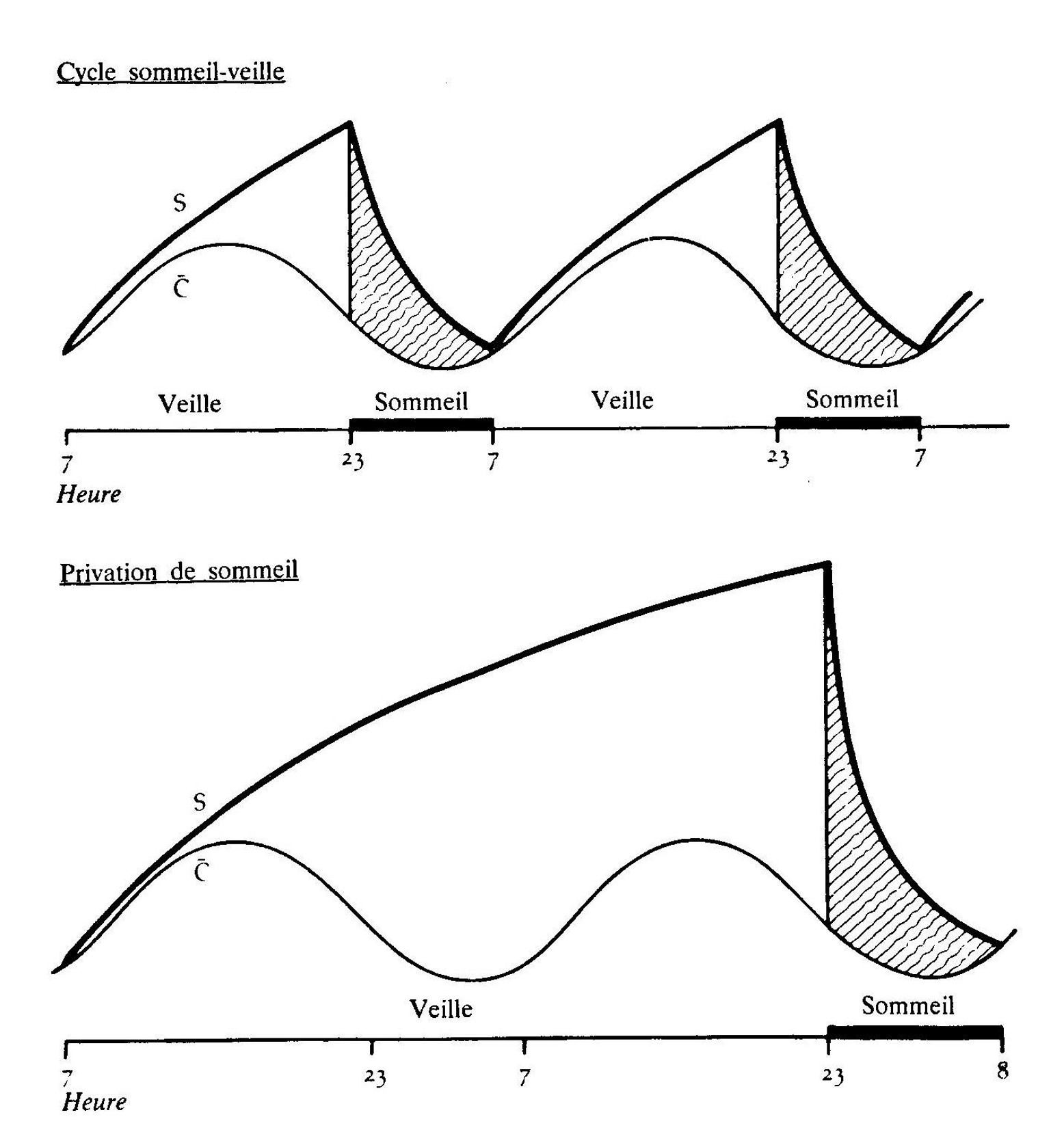
Optic chiasm
The SCN is superior to this region, so it is able to give us light levels from above it
Forbidden zone of sleep
Between 6pm and 9pm; your body temperature is at its highest, so most people are alert in the evening
Sleep gate
Once you reached your maximum body temperature and it starts going down
Serotonin
A neurotransmitter that itself is derived from the amino acid tryptophan and is a precursor to melatonin
Phase advance
When a powerful light is present late during the subjective night, it advances the circadian rhythm (sleepiness happens sooner); more frequent in older adults
Zeitgeber
An environmental cue that helps us regulate and entrain our circadian rhythms (ex. light)